Text
Looking back on my work
The most rewarding aspect of this module of my MA studies, was definitely to discover so many incredible sources. At first, I was a bit lost and did not know exactly what my arguments were, and how they slot into the bigger picture.
After conducting proper research, I found that there was already many arguments around my chosen topic, which made it significantly easier to navigate and understand.
The most challenging aspect for me was, and continues to be Harvard referencing. I have tried to change my approach, and to cite as I go rather than trying to do it all afterwards, but for some reason my similarity reports still come back quite high. I would love some further guidance on this.
I enjoyed the “One topic, different perspectives” brief the most. I definitely find it much easier to create, rather than to explain why and what I am creating. It was also super informative to see how my peers interpreted this topic.
The module allowed enough time for each activity, and I found some of them easier than others. The research and reading activities takes longer for me to work through. My home language is Afrikaans, so I find myself having to read texts over and over before I really understand them.
Even though I found the research, writing and referencing activities more difficult, I definitely feel that I have gotten better at it during this module.
0 notes
Text
My Practice: Colour, tone and photography.
For my MA project, I would like to focus on three key categories: colour, copywriting and photography. I believe that when used effectively, you can communicate so much more with these three things without explicitly spelling everything out.
Let’s look at a few examples. First, colour.
Blue often symbolizes serenity, stability, inspiration, or wisdom.
Red has historically been associated with sacrifice, danger, and courage.
Green symbolizes nature and is often thought to represent tranquility, good luck, and jealousy.
Now, let’s look at a few ways that these three elements are used.
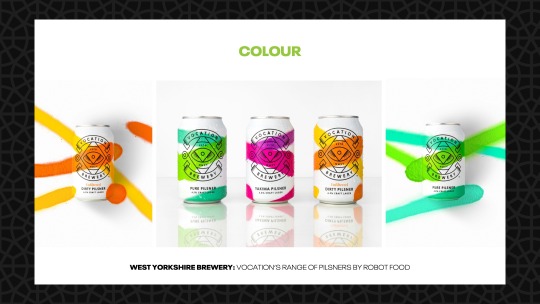
Figure 1: Dawood, S., 2020. Vocation Brewery Craft Lager Packaging, By Robot Food. [online] Design Week. Available at: <https://www.designweek.co.uk/inspiration/vocation-brewery-craft-lager-packaging-robot-food/> [Accessed 10 December 2020].
Using neon sprays on clean white cans, the visual language and mood created by Robot Food for Vocation is quite atypical for craft beer packaging. The colours used are bright, and will jump off any shelf.
I love how the cans have an artisanal yet premium feel to them. Every can looks slightly different, but they all carry the same visual style and synchronise well as a range
Next, photography.

Figure 2: Hanson, P., 2020. Pamela Hanson Photography. [online] Pamelahanson.com. Available at: <https://pamelahanson.com/> [Accessed 10 December 2020].
I love the work of Pamela Hanson, one of the first female photographers to succeed in the fashion industry. Her unique bond with her subjects has allowed her to successfully capture images for fashion editorial campaigns for over 30 years.
She uses bold colours to highlight her subjects, and capture moments that tell a story without saying a word.
Lastly, visuals and copy:

Figure 3: Lynchy 2020. Glaceau Vitaminwater Launches New 'Antidote To Feeling Average' Campaign Via Mccann Sydney. [online] Available at: <https://campaignbrief.com/glaceau-vitaminwater-launches/> [Accessed 10 December 2020].
I particularly like the clever use of visual and copywriting in this Vitamin Water campaign, ‘The antidote to feeling average’ by Coca-Cola South Pacific.
By focusing on something like emotions, they were able to make an emotional connection with the audience that is based on their feelings. Feeling Meh? This is the one for you. Feeling average? Well here you go.
I will continue to explore clever ways to use these three elements in my work.
Sources:
Dawood, S., 2020. Vocation Brewery Craft Lager Packaging, By Robot Food. [online] Design Week. Available at: <https://www.designweek.co.uk/inspiration/vocation-brewery-craft-lager-packaging-robot-food/> [Accessed 10 December 2020].
Hanson, P., 2020. Pamela Hanson Photography. [online] Pamelahanson.com. Available at: <https://pamelahanson.com/> [Accessed 10 December 2020].
Lynchy 2020. Glaceau Vitaminwater Launches New 'Antidote To Feeling Average' Campaign Via Mccann Sydney. [online] Available at: <https://campaignbrief.com/glaceau-vitaminwater-launches/> [Accessed 10 December 2020].
1 note
·
View note
Text
MA Project Development - The work of others
A very important part of my creative process is to start with looking at the work of others.
When starting my development process for my MA project, the first campaign that really drew my attention was a photography campaign by Pol Kurucz. He focused on 11 eccentric inmates and transformed a prison visitors booth into a colourful fashion haven.
In my work, I want to showcase the background stories of powerful women. I want to do this in a bold way, using props and colour to bring each story to life.
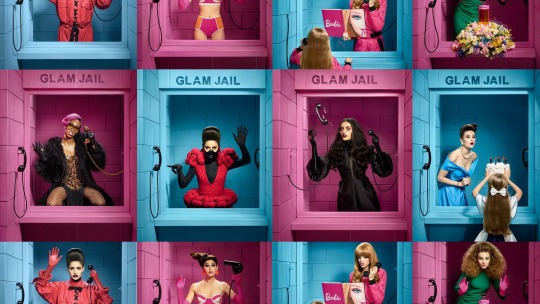
Figure 1: POL KURUCZ. 2020. GLAM JAIL — POL KURUCZ. [online] Available at: <http://www.polkurucz.com/glam-jail/mca1wzs0i14nh3u1gxqw6e99nkbcku> [Accessed 10 December 2020].
The next body of work was done by a design studio called ZEKA Design, and I love the combination of black and white photography and colour.
Even though the photographs are mainly black and white, the designers have used colour in a way that highlights certain areas of the images, pulling focus to little details like patterns on the garments, or the way they fit the models.

Figure 2: ZEKA DESIGN. 2020. People VII Poster Design Series | ZEKA DESIGN. [online] Available at: <https://www.zekagraphic.com/portfolio/people-vii-poster-design-series/> [Accessed 10 December 2020].
The below campaign for Appy Fizz by Sagmeister and Walsh mainly uses 3 colours. The contrasts between red, black and white not only highlights the drink’s visual identity, but also makes the model pop.
The combination of vector based graphics and photography, also offers an opportunity for moving image to really push this campaign beyond just photography.
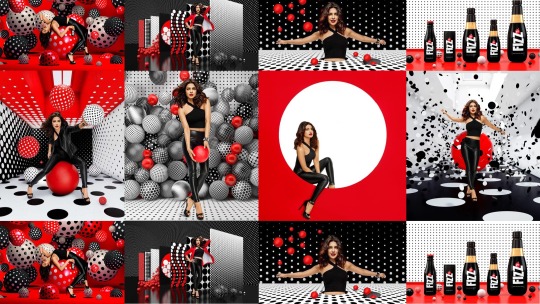
Figure 3: designboom | architecture & design magazine. 2020. Sagmeister & Walsh: Animated Appy Fizz Campaign. [online] Available at: <https://www.designboom.com/design/sagmeister-walsh-appy-fizz-campaign-06-02-2016/> [Accessed 10 December 2020].
Through my exploration, I have realised that the three things I really look for in a great design piece is strong photography, clever copywriting and deliberate use of colour to communicate the unspoken.
I will look into each of these components individually, and really understand how I can push the work that I create to the next level through this lens.
Sources:
designboom | architecture & design magazine. 2020. Sagmeister & Walsh: Animated Appy Fizz Campaign. [online] Available at: <https://www.designboom.com/design/sagmeister-walsh-appy-fizz-campaign-06-02-2016/> [Accessed 10 December 2020].
POL KURUCZ. 2020. GLAM JAIL — POL KURUCZ. [online] Available at: <http://www.polkurucz.com/glam-jail/mca1wzs0i14nh3u1gxqw6e99nkbcku> [Accessed 10 December 2020].
ZEKA DESIGN. 2020. People VII Poster Design Series | ZEKA DESIGN. [online] Available at: <https://www.zekagraphic.com/portfolio/people-vii-poster-design-series/> [Accessed 10 December 2020].
0 notes
Text
Case Study: Milly - Color Lovers by &Walsh
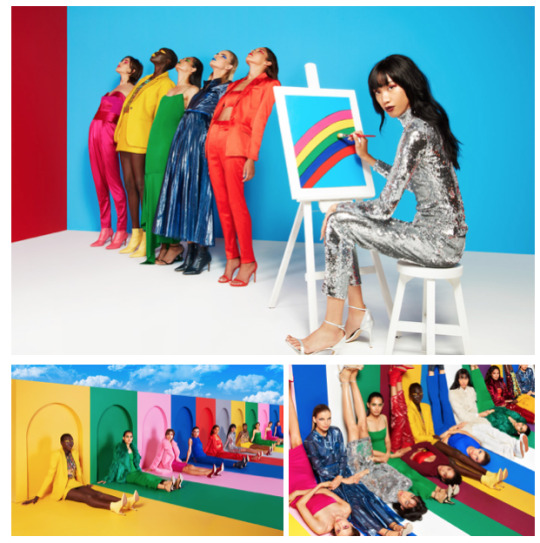
Fig 1: Andwalsh.com. 2020. [online] Available at: <https://andwalsh.com/work/all/milly-color-lover/> [Accessed 10 December 2020].
Background on Milly (client):
Milly collections merge American sportswear with influences of Parisian ateliar techniques, incorporating custom-made fabrics and prints.
Michelle Smith, founder of Milly, is well known for using her platform to highlight important issues such as equality. In 2019, the fashion label went under due to the changing retail economy, and it was a bitter pill for her to swallow.
She then decided to create a new fashion line which is simply called “Michelle Smith”, and it serves as reflection of her new life. She has shifted from always wanting to create something that’s on trend, to rather focusing on how she can express herself most honestly through fabric.
Smith’s aesthetic reaches the target audience of a more mature New York woman, who’s done with the norms of office dressing and how it has been enforced over the years. Women don’t wear her clothes because it is pretty for others, but rather because it makes them feel gppd and confident themselves. (Rosman 2020)
Background on &Walsh:
In 2020, Jessica Walsh, founder and partner of Sagmesiter & Walsh decided to go solo. &Walsh’ main vision is to help brands “find their weird”, and that is evident in her work. &Walsh joins the 1% of women-owned creative agencies - a statistic that Walsh has said she wants to change. One of the main focus areas for &Walsh is to empower women and non-binary people through mentorship, portfolio reviews, talks and meet-ups.
Jessica Walsh has wanted to open up her own agency since before she met Stefan Sagmeister, and even though she describes her time with the “design legend” as a great decade, her desire to do open up her own agency has never faded over the past 10 years of working together. (Brewer 2019)
The name &Walsh isn’t purely a reminder of its origins, but also to highlight the essence of their approach, which is being collaborators with its clients. The ampersand is at the centre of its brand identity to reinforce that the creative synergies between client and agency are vital to the success of the work, and can be customised to best fit each client or creative partner.
Motivation behind the project:
Milly is a client of &Walsh. Fashion designer, Michelle Smith wanted to create a Fall 2018 collection that speaks out on topics such as inclusiveness, individuality and coming together. &Walsh agency was appointed to find a way that highlights this collection, and portrays it for what it truly is - a celebration of people.
Aim of project:
To showcase Smith’s work in a way that reaches the target audience in a striking and meaningful way. Smith used chromatic design and the colors of the rainbow to spark these conversations, and &Walsh had to figure out how they will take this collection to market.
Project Objectives:
To advertise Milly’s work in a way that not only sells her product, but also form a part of the bigger conversations around equality, individuality and togetherness.
Summary:
At their core, both Smith and &Walsh share the same values, which is mainly around empowering women. To make it in the fashion and design industries as women has been a challenge that they have both overcome, and they want to share it with the world in hopes that they will be inspired the same way they were.
The rainbow flag is used as a general icon of social equality and individuality. This campaign uses those colours to not only highlight the colour palette of the range, but also ensures that it is an “instant get”, and that the target audience will instantly know who they are trying to talk to.
Both Smith and Walsh strive to create a world where everyone is treated equally, and feel confident in being themselves. This makes them the perfect collaborators. They both had the same goal in mind and could therefore work together effortlessly to bring the work to life.
Not only does this collaboration visually intrigue me, but it also offers a great way to communicate a very important issue in a positive and constructive way - through brilliant fashion and design.
Bibliography:
Behance (n.d.). Milly: Color Lover. [online] Behance. Available at: https://www.behance.net/gallery/83178937/Milly-Color-Lover?tracking_source=search%7Cfashion%20portrait%20art%20direction%20color.
Jenny Brewer - It’s Nice That. (2019). Jessica Walsh is launching her own creative agency, &Walsh. [online] Available at: https://www.itsnicethat.com/news/jessica-walsh-independent-creative-agency-launch-graphic-design-240719.
Rosman, K. (2020). How the Designer of Milly Broke Free. The New York Times. [online] 24 Oct. Available at: https://www.nytimes.com/2020/10/24/style/milly-designer-michelle-smith-obama-soulcycle-stacey-griffith.html.
1 note
·
View note
Text
My MA Project: Themes, concepts and contexts
Throughout my studies I have always been drawn to topics surrounding feminism and women empowerment, but in my experience, the topic has become oversaturated and the goals and objectives of these movements are no longer clear.
In the search for equality, whether we are talking about gender or race, society seems to have forgotten what started these movements in the first place.
Throughout the course of these movements taking place, especially online as COVID sent the whole world into a digital craze, it seems that these movements almost came together under 1 umbrella - “Social Media Empowerment”
Because everyone has their own platforms, it is becoming increasingly important to know what you want to say, and how to say it so it has an impact.
In order to support a cause, you have to support it wholeheartedly, on a deeper level - not just through creating noise around whichever topic is most popular at the moment.
During the course of my MA project, I want to look into movements such as Women Empowerment, Feminism and #BlackLivesMatter, and how they came about. I aim to develop a campaign that explores ways to bring forth positive change around these issues.
Initial Idea:
Create a platform that encourages and empowers women to be unapologetically themselves within a likeminded community.
Developing idea:
One thing that I have seen and that has really piqued my interest since submitting my Project Proposal in the previous module, is the fact that Disney has casted a black woman to play Ariel in the Little Mermaid’s live action remake.
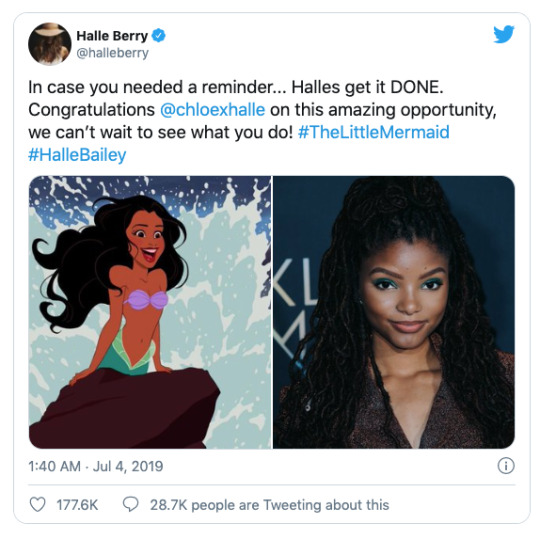
Figure . 1: BBC News. 2019. Halle Bailey: Who is The Little Mermaid’s new Ariel actress? [online] 4 Jul. Available at: https://www.bbc.com/news/newsbeat-48867010 [Accessed 1 Nov. 2020].
Some people were outraged, and some were delighted..
I believe that there’s a case for both. Some want their childhood fairytales to remain the same, and some feel they haven’t been inclusive enough.
Another example is Disney casting Yara Shahidi as Tinkerbell. Again, the same arguments came to light.

Figure 2: BBC News. 2020. Yara Shahidi: Who is Disney’s new Tinkerbell? [online] 28 Sep. Available at: https://www.bbc.com/news/entertainment-arts-54325909.
I believe that there is an opportunity here to look into the issue on a deeper level, and come up with a solution that adheres to the opinions of both the people for, and against these announcements.
It is also an opportunity to look into fairytales, and how they have had an impact on women growing up.
Every girls wants her fairytale, no matter her background or where she came from. Each girl’s fairytale also significantly differs from the next, but is just as magical in its own way.
I don’t want to rewrite history. I want to honour it by carrying forward the lessons learnt over the past few decades. I want to do this in a positive way, that celebrates differences and inspires women to be whatever they want to be.
Resources:
Halle Bailey: Who is The Little Mermaid’s new Ariel actress? (2019). BBC News. [online] 4 Jul. Available at: https://www.bbc.com/news/newsbeat-48867010 [Accessed 1 Nov. 2020].
Yara Shahidi: Who is Disney’s new Tinkerbell? (2020). BBC News. [online] 28 Sep. Available at: https://www.bbc.com/news/entertainment-arts-54325909.
0 notes
Text
One topic, different perspectives
Looking at topics through different perspectives is a great way to gain better understanding, and to realise that your own opinion and approaches differ to those of others.
In a study activity, we were tasked to look at the concept that is ‘movement’, and what that means to us. To me, it means the following:
When I think about movement, I immediately thought that in order to tell that something is moving, you have to know that something else is standing still.
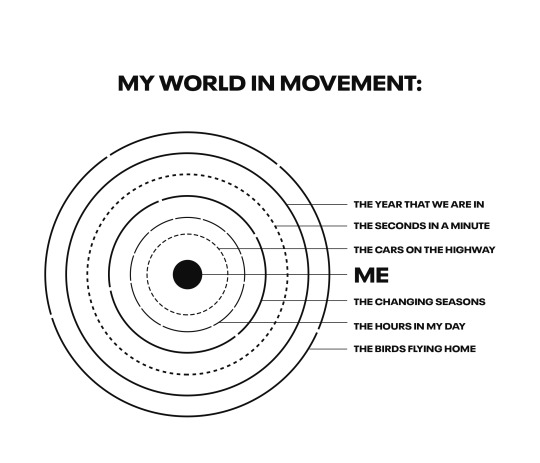
So with my concept I wanted to look at movement from a place of standing still.
To explain - as I am standing on my balcony, looking out at Table mountain, I am standing completely still, but there’s so much that’s moving around me.
For example: Time is moving. The earth is turning. The stars are repositioning. The cars are driving on the highway. The birds are flying.
I can tell that everything is moving, because I am standing still. This gave me the idea to create a pattern that shows movement from a place of standing still.
This pattern can be further developed to include as many moving things as I’d like. It can also start to show how other people’s moving worlds collide with mine.

Some of my peers had really interesting approaches. Waleed Rabin (2020) decided to approach the concept from a fitness perspective, and used a silhouetted figure of someone running. This made me think of other ways that movement can be shown in fitness through photography of the garments. Through close up shots of the details of the garments, you can show the crinkles, how the clothing stretches or expands to allow for movement.
Another student, Ronna Fu (2020), interpreted the concept as wind, and how it has the ability to move whatever comes in its way. She refers to wind turbines, and how the wind has the ability to generate power through movement.
This was a very insightful exercise and you learn so much by looking at things through the eyes of others.
Sources:
Idi-study.com. 2020. IDI-Study | University Of Hertfordshire. [online] Available at: <https://idi-study.com/module/35570/forums/topic/3822> [Accessed 10 December 2020].
0 notes
Text
My methodologies in my own personal practice
The term “methodology” refers to the particular perspectives and overall approaches taken to the research process as a whole. I believe that all methodologies can be used in creative practice, but through the stipulation and refinement of your research questions, you will find that some of them are a better fits than others.
See below breakdown of methodologies, and what my take on them are:
Surveys can be used to understand your subjects better, and when you are looking for multiple points of view on the same topic in order to gain a better and wider understanding of your subject matter.
Experimental studies can be used when you want to experiment with different materials, for example paint or drawings. Sound, light and heat can also have an effect on the physical outcomes in your creative work, and experimenting with what exactly the correct amounts are, and what exactly the effect that it has is, can make a huge difference in your final outcomes.
During the research process, especially practice-based research, this method can be extremely helpful. Experimenting is always a good idea when you are doing creative work because you have to give yourself the opportunity to try different things before finalising your work.
Longitudinal Studies, in my opinion, might be the trickiest method to use when it comes to creative work, because you are almost always on a tight timeline, and you have to be able to draw your own conclusions quite quickly. That being said, keeping an eye out on specific things can always help you somewhere along the line, even if you haven’t been too conscious about doing it. Look at social issues for example - we are able to track back hundreds of years and use the findings of other people, and ourselves throughout our lives to give context and get things onto a timeline to gather better understanding on your. subject.
Cross-Sectional studies is a great method to use when you are on a timeline, and allows you to cover a lot of ground relatively quickly. Relying on the points of views of other studies is a great way to gather a wider understanding on your topic, and it can make it easier to gather your own opinion when you pull from the work that other people have done or are doing.
Case studies are a great way to get a deeper, more focused understanding on a certain topic to help inform you of what the best creative outputs will be. You can create your own case study, or research those of other researchers to help inform your work.
Much like longitudinal studies, Action Research might require time that you don’t always have in the creative world. If you do have the time, it can be very insightful to spend some proper time to closely study your subject matter, whether it’s people and how they react to situations, or materials and how they react to their environments.
In my opinion, Ethnography is a must when it comes to any creative work and research. In order to have the best shot of capturing exactly what the target audience wants, you have to almost become part of the target audience. You have to be able to put yourself in their shoes in order to understand what the best creative solutions would be.
Participative Enquiry is a great method to use, especially when you have reached your limits on a subject. This method gives the people close to you the opportunity to contribute in a way that you understand, as they know how you think, and where your strengths and shortcomings lay. Sometimes you just need to see something from a different perspective, but you also want to know, like and trust the person you are gathering insights from.
Feminist Perspectives - at first glance I thought that everything shouldn’t be viewed from a feminist perspective, but after spending some time with it, I believe this might be helpful. I do however believe that a male’s perspective can be just as helpful when it comes to certain topics, and I don’t think they should be excluded. In my opinion, you will always gain better understanding when looking at things from a male and female point of view.
Grounded Theory can be an amazing method in creative practice as it allows and forces you to open up your mind to what you might find. For me, it is always better to go in with points that I would like to prove, or change my mind on, otherwise it is just too open-ended and it is difficult to then bring it back to conclusions. I do think that it is different for everyone though, and some people might find this process inspiring when coming up with creative solutions to problems.
In my own creative practice, I am definitely leaning towards the following methodologies:
Surveys - To offer myself the opportunity to see how different people respond to similar questions. This will help me get to know my audience better and ensure the work I create reaches the right people in the right ways.
Experimental Studies - To ensure I allow myself freedom to explore and create without restricting myself at an early stage. New things are born when you open yourself up to the experimental process.
Cross-Sectional Studies - To test my theories and arguments it would be very helpful to compare my work to the opinions and the work of others. This can offer a benchmark of what success looks like, and help me make sure that my work is up to a certain standard.
Case Studies - I will always refer to case studies, whether it is to further my understanding on a topic, or to test my arguments against those of others.
Ethnography - Make sure I know exactly what my target audience wants by becoming my target audience. If I can’t become them for some reason, it will certainly be helpful to talk to people in the target audience to ensure I have a deep understanding of the subject.
Participative Enquiry - I believe that you attract people that are like-minded. Diving into your immediate circle, or into the people’s mind that know you well and work with you offers an opportunity to see yourself through the eyes of others. This can help identify your blind spots, and by knowing who the advice/inputs are coming from will give you an idea of how credible the inputs are.
0 notes
Text
Violence against Women
Violence against women has been a problem for as long as I can remember, and continues to be one til this day. Global estimates published by WHO indicate that about 1 in 3 (35%) of women worldwide have experienced either physical and/or sexual intimate partner violence or non-partner sexual violence in their lifetime. Most of this violence is intimate partner violence. (Violence against women 2020)
A cross-sectional survey of female students conducted in 2014 under MENTOR-VIP shows that married students who have lang ownership, employed, member of community groups and higher level of husband’s education were less likely to experience physical violence. (Sedain, Pant and Sedai, 2016)
With that being said, even though it is often showed that men are more aggressive than women, this in no way means that women aren’t aggressive. A study conducted in 2016 in Ghana revealed that females were found to victimise aggressive acts more than men. Women were also more likely to show verbal aggression and indirect aggression towards their male partners. Times are changing, and women are becoming increasingly active in their male-dominated societies. Females are becoming more independent and self-motivated, and in some cases, the roles are starting to shift. (Darko, and Grigaityte, 2016)
Gender based violence has many negative impacts on children as well. Children who grow up in families where there is violence may suffer a range of behavioural and emotional disturbances. These can also be associated with perpetrating or experiencing violence later in life. (Violence against women, 2020)
It is fair to say that gender based violence affects women, men and children in different ways. The fight against this must continue, and it is important that we educate ourselves on how to look out for the signs in our lives as well as the lives of others.
There are many attempts to fight this issue, for example WHO, who in collaboration with partners are strengthening research and capacity to assess interventions to address partner based violence.
The fight is far from over, and we have to always keep striving for a better world for all sexes.
Sources:
Bhagabati Sedain, Puspa Raj Pant, Prapti Sedai. (2016) Tribhuvan University: Experience of intimate partner violence among university level female students in Kathmandu. 10.1136/injurprev-2016.042156.984.
George Darko, Ingrida Grigaityte. (2016) What does liberalisation and empowerment of women have to do with male victimisation?, Åbo Akademi University, Vaasa, Finland. 10.1136/injuryprev-2016-042156.985.
Who.int. 2020. Violence Against Women. [online] Available at: <https://www.who.int/news-room/fact-sheets/detail/violence-against-women#:~:text=Global%20estimates%20published%20by%20WHO,violence%20is%20intimate%20partner%20violence.> [Accessed 10 December 2020].
0 notes
Text
Empowerment through social media
Social media has become an important platform for people to share their opinions, and to debate around important issues. On social media, everyone has their own voice, and can say what they want to say, about what they want.
A documentary titled “The Social Dilemma”, was released this year, and highlights many issues that come with social media platforms and the ways that they are being used. It compares the social world to a robot-like setup, whose only purpose is to get you to spend more time on screen. It achieves this by getting to know you through accessing data that is able to track what you are searching for, where you are going, who you are talking to, and what you are interacting with. It gets to know your patterns, and can predict what you are going to do next by analysing all the collected data.
It is then able to feed you ads, articles and debates that might interest you. When it comes to debates, you will find that your feed is tailored to support your opinions. When you start typing a search into google, a list of suggestions pop up. This list is different to everyone. See Figure 1 below:
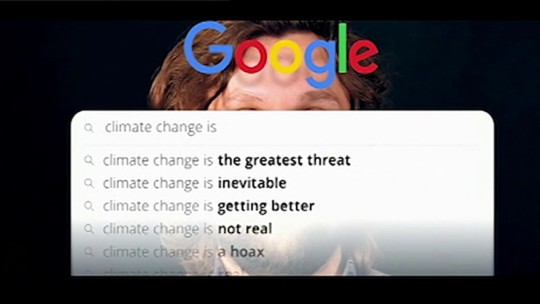
Fig 1: Brian Flood, Fox News. 2020. Ex-Google Consultant Sounds Alarm On Negative Impact Of Big Tech In ‘The Social Dilemma’. [online] Available at: <https://www.foxnews.com/media/the-social-dilemma-toscano-google> [Accessed 10 December 2020].
Flood (2020) points out the issue that is at hand. When we search for ‘climate change is’, a string of search suggestions pop up that is either for or against what you are searching for, depending on what your personal opinion is. The search bar looks different to everyone, but because we see what we see on our platforms, we believe that we are right, and that our arguments are the most powerful.
This is dangerous, because when we are surrounded with only likeminded people, we get ‘tunnel-vision’ sometimes dismiss the real facts.
In an article about social media empowerment, Matthes Fleck (2012) argues that the internet-enabled social media networks exhibit patterns of power law distribution and an uneven distribution of structural social capital among the actors involved.
It has become so easy for people with seemingly minor concerns to connect, and to promote the issues they are experiencing. Social media has given a voice to a wider range of social and environmental concerns.
Researchers have argued that the simplicity of finding likeminded friends online may lead to a fragmentation of the public audience, increasing homogenisation within communities and increasing polarisation and confrontation among them. (Scheufele et al. 2006: Woodly 2007:Nie et al. 2010)
The biggest concern for me is that we are unable to stop what is happening, and have to sit on the sideline, watching it all play out in front of our eyes. We all want to have a positive impact on the world, but it is extremely difficult to do so in the social media-empowered world we live in today. We can’t step away from social media, even though we may want to because it is such an important source of information. Thus, all we can do is strive to find our own voices that are not too concerned with the opinions of others - but the question is, how do we do this?
People are uneducated and unaware of what is going on online, and what the various agendas are. I can only hope that at some point people realise what is actually happening, and that the world is much bigger than what it looks like on our feeds.
Sources:
FIESELER, C. and FLECK, M., 2013. The Pursuit of Empowerment through Social Media: Structural Social Capital Dynamics in CSR-Blogging: JBE. Journal of Business Ethics, 118(4), pp. 759-775.
Scheufele, D.A., Hardy, B. W., Brossard, D., Waismel Manor, I. S., & Nisbet, E (2006). Democracy based on difference: Examining the links between structural heterogeneity, heterogeneity of discussion networks, and democratic citizenship. Journal of communication, 56(4), 728-753.
0 notes
Text
‘Mary Amaka’ Feminism: Exploring the underside of pop cultured ‘global women empowerment’
Feminism. noun: “the advocacy of women’s rights on the ground of the equality of the sexes”.
I believe that today’s definition of feminism is no longer true to the Oxford language definition above, and has become more concerned with females being superior to males rather than on an equal footing.
Maureen Ikeotuonye, a student from the University College in Dublin, Ireland wrote an insightful article that traces the conventional discourses on global inequality and justice that have been overwhelmed with what can be called the narrative of the ‘global women’s rights issues’ industry. (Ikeotuonye, 2016) With this article, Ikeotuonye aims to establish the term ‘Mary Amaka Feminism’, a term that encapsulates a kind of feminism that is no longer concerned with the real facts, but rather this misguided idea of what feminism should be.
Chimamanda Adichie, a self proclaimed feminist author, is a great example of why Ikeotuonye’s argument has merit, as she exposes herself numerous times as being uneducated and confused about what she stands for, but she shouts “I am a feminist and you should be too”.
To empower implies that one is ‘in power’ and those ‘in power’ have always been viewed with suspicion by democratic minded people. Therefore the uses and context of usage reveal the underside, specific local histories or genealogy often concealed in the latest universal or cosmopolitan triumphant interpellation. (Ikeotuonye 2016)
In today’s day and age, it is almost vital to pick a side. Either you are a feminist, or it is assumed that you hate females. There’s no in between. Society forces us to make a choice, and to support that choice no matter what. That’s where many people slip and where it becomes unsustainable.
Ikeotuonye makes a brilliant comparison of feminism to soup, using the terms elu ofe and ala ite. Elu ofe refers to the top part of the soup, which is watery, with only some of the flavour coming through. Ala ite refers to the bottom part of the soup, which is chunky and has all the contents. A lot of people today fall into the Elo ofe category, and only know very little about where feminism actually came from, and what it means. Yet they are still at the top. If you are able to get through the top bit, you can get to the really good stuff that has substance and is backed up by proper facts.
Mary Amaka feminists often refers to themselves as “hybrids”.This so called “hybridity” is hidden in an eager attempt to absorb the demands of power, and since power controls the present, the ‘hybrid’ wants to rewrite the past in order to suit the present.
Feminism is seeking to reclaim denied heritage’ by constructing a positive identity within the same system of gender oppression. What is not clear is who the ideal-type man Feminists wants to be equal to actually is.
Men has suffered just as much, in different ways over the years, and even though I am not denying the fact that inequality is a problem, I feel that in some cases, more often than not, gender is not the problem. It is rather an easy thing to blame for much bigger problems in the world and in history.
Sources:
Ikeotuonye M. (2016) ‘Mary Amaka’ Feminism: Exploring the underside of pop-cultured ‘global women empowerment.’ Current Sociology. 2016;64(2):293-310. doi:10.1177/0011392115614790
1 note
·
View note
Text
Walt Disney’s Civilizing Mission: From Revolution to Restoration
When we look at childhood fairy tales, we first focus on the magic - the happy endings… But are these tales a realistic depiction of what real life looks like? Do happy endings exist? Or is it just an unrealistic, unachievable picture that has been painted at a young age, setting unrealistic standards?
In Jack Zipes’ book, Fairy Tales of Subversion, Zipes (2007) argues that Walt Disney has created this fairy tale world that tells the perfect love story, where the beautiful and noble runs off and live happily ever after, but Zipes does not see this as a positive thing. In fact, he has quite a few issues with Disney’s approach to his work.
The first issue Zipes points out, is that Disney took a lot of the older fairytales, many of them written by The Brothers Grimm, and robbed them from their originality, ultimately leaving the reader/viewer with a tale that that reinforces the patriarchal symbolical order based on rigid notions of sexuality and gender. (Zipes, 2007: 194)
The second thing he points out is that although Walt Disney was a masterful coordinator, who could pull on the strengths of others to bring his tales to life through amazing illustration, animation and artistry, he always took the credit for all the work. This can also be seen in the way he depicts the male leads in his films. They always show up once the work has been done, and whisks the princess off to the castle where they live happily ever after.
Zipes (2007:196) also points out that the male leads in Disney’s fairytales are mostly timid, pathetic, and is in no way a match against the villains in the tales, such as the witches for example, who are often played by females.
In Zipes’ opinion, Disney’s pictures deprive the audience now of visualising their own characters, roles, and desires. Instead of celebrating the characters for their differences through the lens of the child in us, he began insisting on tam-ing if not instrumentalising the imagination to serve the forces of law and order. (Zipes, 2007: 200)
Let’s look at Snow White for example. In the original tale, the evil queen appears only once, where she hands Snow White the poisonous apple. In Disney’s version, right from the beginning, the queen is jealous of Snow White’s beauty, leading to her wanting to kill Snow White. Not only does he introduce the theme jealousy, but he also pits women against each other, enforcing this idea that you should always be prettier than someone else (mirror mirror on the wall).
It is only in more recent years where the animation industry were able to step up and do something to flip the narrative. Look at Shrek (2001) by Dreamworks for example. The two Shrek films make obvious reference to the Disney Corporation and ideological world to critique and question it. (Zipes 2007: 211) It is enlightening that the ogre and the princess fall in love, and live happily ever after in their “uglier” states.
I believe that we need more films like Shrek, celebrating the outcasts for who and what they are, where we can see them as beautiful instead of different.
Through Disney’s attempt to “cleanse the world”, we have lost so much of what makes it real, special and unique, leaving young children with unachievable standards of what life should be.
Morel of the story - we need more ogres!
References:
Zipes, Jack. (2007) Fairy Tales and the Art of Subversion, Taylor & Francis Group. ProQuest Ebook Central, https://ebookcentral.proquest.com/lib/herts/detail.action?docID=1024460.
0 notes
Text
Critical Analysis - ‘Cinderella did not speak up’
An article by VIII.Su-Jeong Wee, Kyoung Jin Kim & Youngmi Lee (2019) ‘Cinderella did not speak up’: critical literacy approach using folk/fairy tales and their parodies in an early childhood classroom, takes a close look at childhood folk/fairy tales and their parodies to gain a better understanding of how five-year-old students perceive these tales. The study aims to establish whether or not the students are able to alter their understanding of these storylines, and open themselves up to alternate solutions and endings. Through a critical literacy approach, a Korean class of 5-year-old children started to challenge social norms and stereotypes, and come up with their own versions of stories based on their own backgrounds and circumstances.
As part of the critical literacy approach, parodies of certain popular fairy tales were studied to start opening up the minds of the children, encouraging them to look at things from different perspectives. The reading was followed by activities such as discussions, writing and sketching, to ensure that they critically reflect on the reading materials.
Through the medium of folk/fairy tales and parodies the critical literacy approach was examined, and Wee, Kim & Lee (2019) found that the participating children were able to accept multiple perspectives and consider characters in ways that was not highlighted in the original stories. Through this process the children learnt to challenge the socially dominant ideas and gender stereotypes.
They found that it is extremely important for teachers to pay close attention to how they interact with young children. Through asking critical questions, children are able to examine their own insights and those presented in texts. (Wee et al. 2019)
When children question texts connecting to their experiences and beliefs, they could be more deeply engaged in critical analysis (Simpson, 1996).
It is important for educators to guide children’s own interests and questions in critical ways and offer series of literacy activities that encourage children to ‘perceive critically the way they exist in the world in which they find themselves. (Freire, 2000, p.83)
With this study, Wee et al. (2019) proved that teachers do not always need to limit the stories and books they teach their kids to topics around social issues, and that these social issues can be addressed through critical literacy. By putting the children in charge of what happens, you are able to identify the issues that surrounds them in their day-to-day lives, offering alternate ways of connecting with them.
Sinno, Charafeddine and Mikati (2012) argue that Early Child Development interventions have been developed with the aim of improving the overall function of children through education, and are based on the fact that young children respond best to specific modalities designed to encourage and stimulate their development process. This supports the work of Wee et al. (2019), stating that children are enriched by well-planned and connected activities, and through this, their understanding of social issues can be even further developed.
This article was written in 2019, and is just as relevant today as it would have been in 1950, and as it will be in 2025. Children’s foundations are laid when they are young (between 0-5 years), and it is important to educate them at this level and help them understand that everyone’s worlds look different.
Being able to understand the social issues that surround yourself, as well as the people around you is and will always be extremely important. It puts you in a position of understanding and sets you up to function in a society with respect.
Through the use of data collection such as video recordings of the class activities, interviews with the children and teachers, observational field notes and informal notebooks including memos, the authors were able to capture enough data to support a fact-based argument.
Video recordings were transcribed right after recording sessions to ensure that the sessions are fresh in the researchers mind, and they were able to analyse details like facial expressions and physical gestures of the participants in order to draw their conclusions.
The data analysis was conducted in three phases, adopting Emerson, Fretz, and Shaw’s (1996) coding methods. In the first phase, a preliminary coding was performed of all the collected data, allowing the researchers to reach agreement through discussion to verify and validate the data analysis (Golafshani, 2003)
In the second phase, meaningful episodes from each literacy activity were grouped and given descriptive codes. Through repetitive reading of transcripts, they were able to find some core themes such as perspective, stereotypes and social norms, and further investigated how a selected theme was related to other themes (Wee et al. 2019).
Wee et al. (2019) goes on explaining the third phase, where comparative methods were employed among the different data sources in order to check the consistency of the information. In addition, a member check (Kirk & Miller, 1986) was conducted through sharing their analysis with other professionals in the fields of early childhood and literacy education to confirm validity of the categories and themes.
Exchanging ideas enabled a deeper consideration and understanding of the data as well as an analysis that provided alternative interpretations.
Wee et al. (2019) used a combination of neutral and emotional words in their writing. Because the topic is children, it’s almost vital to use language that is easy to understand and digest. Emotional writing is used when talking about interacting with the children, and a higher academic tone is used when analysing the research and data based aspects of the work.
This article was written from a critical standpoint, setting out to prove an outlined theory through several lenses and processes that was planned out in advance.
The article chose to focus on social issues that were brought up by the subjects, rather than the ones that seem relevant to people in general. For example, racial issues that came up in the classroom were viewed from the children’s perspectives and were analysed in the form they took when they came up in the follow-up activities, rather than the overall view we have surrounding racism as adults.
I accept the arguments presented by the authors of this article. Through critical analysis and data collection, it has been made clear that there’s a lot of merit in what they are saying, and I agree that through challenging children to empathise with others and to understand where they come from, we can set them up for a brighter future based on respect for one another.
References:
Emerson, R., Fretz, R., & Shaw, L. (1996). Writing ethnographic fieldnotes. Chicago, IL: University of Chicago Press.
Freire, P. (2000). Pedagogy of the oppressed. New York, NY: Continuum.
Golafshani, N. (2003). Understanding reliability and validity in qualitative research. The Qualitative Report, 9, 597–607.
Kirk, J., & Miller, M. L. (1986). Reliability and validity in qualitative research. Beverly Hills, CA: Sage Publications.
Kim, Y.-M. (2015). Connecting folk talks and parodies in primary English teaching: Focusing on literacy learning and critical thinking skills (Unpublished Master Thesis). Korea National University of Education, Cheongju.
Simpson, A. (1996). Critical questions: Whose questions? The Reading Teacher, 50(2), 118–127.
Sinno, Durriyah, et al. Enhancing Early Child Development: A Handbook for Clinicians, Springer New York, 2012. ProQuest Ebook Central, https://ebookcentral.proquest.com/lib/herts/detail.action?docID=1081855.
Su-Jeong Wee, Kyoung Jin Kim & Youngmi Lee (2019) ‘Cinderella did not speak up’: critical literacy approach using folk/fairy tales and their parodies in an early childhood classroom, Early Child Development and Care, 189:11, 1874-1888, DOI: 10.1080/03004430.2017.141785
0 notes
Text
The importance of Research in creative practice:
Research is the process of looking into a certain topic, as well as closely related topics in order to get a better understanding of the subject matter you are working with.
In an article about Research as Creative Practice, Stancliff and Goggin (2015) argues that there are two metaphors when it comes to successful research - the geography of questions, and joining conversations. By applying these metaphors, students learn that research, and the writing that emerges from it, creates knowledge rather than just just demonstrate that they know something someone else created.
In-depth research can reveal strengths and weaknesses at an early stage of your work, and allow you to push into your findings on the right trajectory.
The Triangular Research Approach:
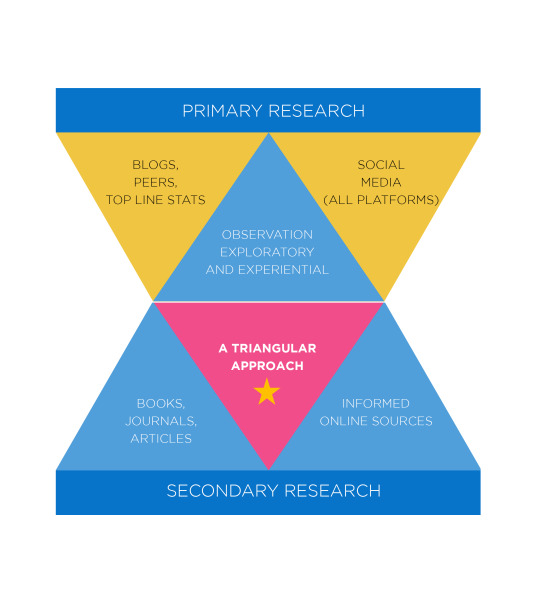
PRIMARY RESEARCH
In this first stage, the aim is to keep your research as wide as possible, looking into a wide variety of thoughts, theories and visual inspiration in order to gain a better understanding of where your interests lie.
At this stage, I am not to worried about the deeper facts and influences that might inspire my work, but rather the top-line info that attracts me.
SECONDARY RESEARCH
In the second phase it is time to start critically evaluating your thoughts and notes to identify where the potential areas of further investigation lies by identifying more in-depth sources to gain better understanding of your topics.
It is also the phase where you start eliminating thoughts and ideas that seemed interesting in phase 1, but no longer supports where you are wanting to go with your work.
ACHIEVING A TRIANGULAR RESEARCH APPROACH
By pushing into your findings from phase 1 and 2, you are able to come up with a body of research that is focused while checking all the important boxes and aims to achieve your research goals.
Questions will start to arise, allowing you to gain new insights and findings that you can only achieve when truly understanding the subject matter you are working with, and what your thoughts, opinions and theories are coming out of the process.
Sources:
STANCLIFF, M. and GOGGIN, M.D., 2015. Research as Creative Practice: Two Metaphors for Teaching and Learning. English Journal, 105(2), pp. 27-33.
0 notes
Photo
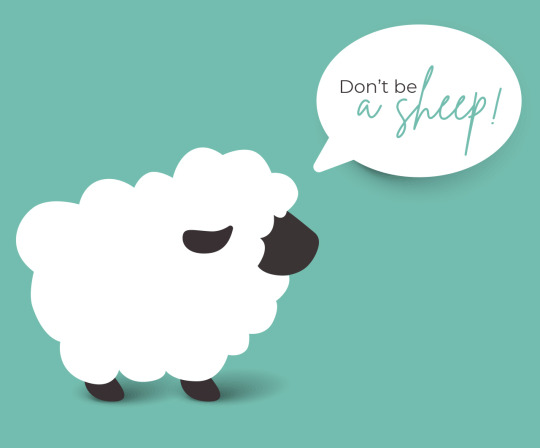
Applying Critical Thinking means, well, to not be a sheep!
Sheep just follow one another without asking any questions. They can end up on greener fields, or at the slaughter house. They won’t know until it’s too late to turn around.
Sheep-like thinking is dangerous in the creative industry. In order to have meaningful arguments, we have to be open and willing to challenge opinions of others in a constructive way and so forming our own, new conclusions.
In order to think critically, we have to accept that we might not have all the answers. It is important to consider that your opinion alone might not be enough to form a strong analytical stance on a certain topic.
Before we can take a stance, we have to first understand our own argument and what the influence of it can be. Then, we have to look into arguments that don’t agree with ours, and what the reasons are for that. We have to consider how other opinions may affect and change our own views on a particular topic, and we have to welcome these discussions.
When we apply critical thinking to arguments and claims, it will result in a strengthened understanding on the topic that has been formed through the evaluation of ALL parts, not just our own.
0 notes
Quote
"It is the mark of an educated mind to be able to entertain a thought without accepting it."
Aristotle
1 note
·
View note